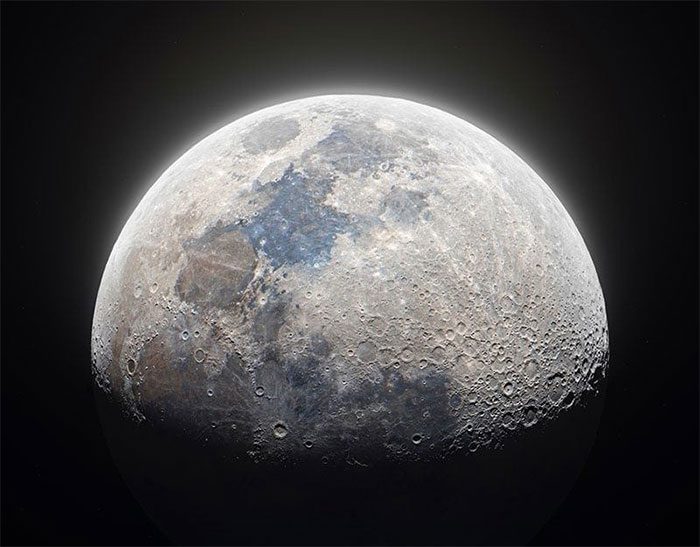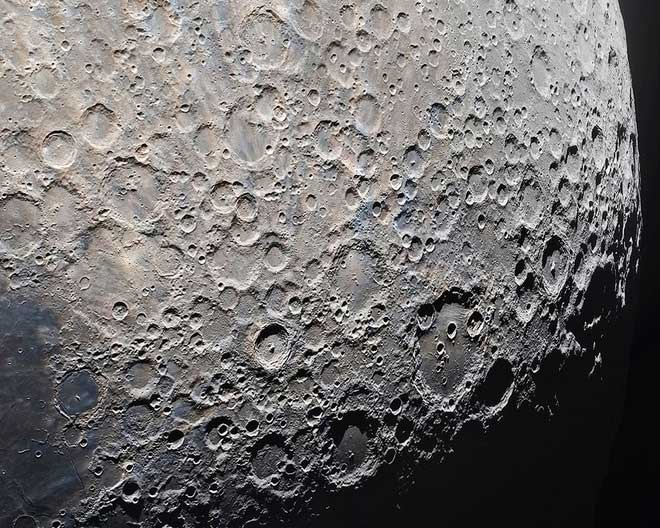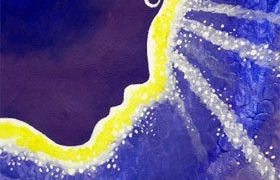Astronomical photographer Andrew McCarthy has captured the “GigaMoon”, an incredibly detailed image of the Moon with a resolution of 1.3 gigapixels, assembled from 280,000 photographs.
“My hard drive is filled with dozens of failed attempts at GigaMoon. I have to monitor weather conditions that affect astronomy to keep up with the ever-changing atmospheric conditions,” McCarthy told PetaPixel.

The GigaMoon image, 1.3 gigapixels, composed of 280,000 different photographs. (Photo: Andrew McCarthy).
McCarthy utilized a 28 cm telescope with a 2.5x magnification system, resulting in a final focal length of 7,000 mm. The temperature differences between atmospheric layers can cause the Moon to appear blurry and shaky when photographed at this focal length.
“Even in good weather conditions, the images still resemble being shot through water because the atmosphere distorts the image. Therefore, I took about 2,000 images at once of each segment of the Moon,” McCarthy explained. After capturing one segment, the photographer continued to shoot other sections to ultimately document the entire Moon.
Despite relatively good conditions, there were times when the sky was less than optimal, so McCarthy conducted the full Moon imaging process twice to obtain the sharpest photos of all the different regions. In total, he captured 140 sessions, each with 2,000 images, resulting in a total of 280,000 photographs.

The image is detailed enough to show thousands of craters on the Moon’s surface. (Photo: Andrew McCarthy).
However, the equipment used for this process was monochromatic, and the photographer had to shoot in color as well.
“To capture color, I used a 30 cm Newtonian telescope equipped with a full-frame CMOS camera to obtain high-quality color data to add to the final image,” McCarthy said.
Finally, assembling all the images and color data into a final picture was an even more complex task, requiring significant computational power.
“I incorporated ‘drizzle’ into the images, which means I used software to interpolate data between pixels to create a higher resolution image from a series of overlapping initial images. This process took several days to complete,” the photographer noted.
Once this process was finished, the regions of the Moon were manually stitched together in Photoshop. While assembling, McCarthy also adjusted the orientation of the images to compensate for the Moon’s changing angle during the shoot.
After several days of image assembly, the photographer moved on to familiar steps like adjusting contrast and colors. McCarthy had to cut the images into multiple pieces so that the computer could handle this extremely heavy image.
“The images were cut into many pieces and stitched together 10-15 times to ensure that the final product looked perfect overall, even when zoomed in,” he said, adding that his computer crashed at least a dozen times while completing GigaMoon.





















































